7 Business Lessons from Facebook’s Culture & History
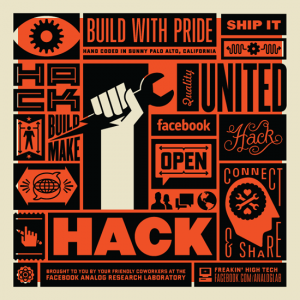 Every time I visit Facebook HQ, I get a healthy dose of what exactly it means to let a company’s culture pervade it’s workspace. Ever since the early days, when Facebook’s first employees Graffiti’d the walls of their original office space, Facebook has left a lasting mark on their spaces, emblematic of their “hacker” culture (That original piece of graffiti’d drywall, by the way, was cut out and has been moved to each subsequent Facebook office as they grow). But beyond just “leaving a mark,” Facebooks expressive culture serves as a shrine to their radically “Silicon Valley” beliefs and values. For those of you who’ve never been, here are some of those values, as emblazoned on walls, buildings, desks, and screen savers.
Every time I visit Facebook HQ, I get a healthy dose of what exactly it means to let a company’s culture pervade it’s workspace. Ever since the early days, when Facebook’s first employees Graffiti’d the walls of their original office space, Facebook has left a lasting mark on their spaces, emblematic of their “hacker” culture (That original piece of graffiti’d drywall, by the way, was cut out and has been moved to each subsequent Facebook office as they grow). But beyond just “leaving a mark,” Facebooks expressive culture serves as a shrine to their radically “Silicon Valley” beliefs and values. For those of you who’ve never been, here are some of those values, as emblazoned on walls, buildings, desks, and screen savers.
Hack – A Graffiti’d logo seen almost ubiquitously on campus
This one is hard to miss, probably because it is painted on every other wall, and was scrawled across the entire building of Facebook’s Palo Alto HQ (See photo). But “Hack” in the Facebook sense has a different connotation than you might be familiar with. In this context, the word “Hack” is more akin to the word “Tinker.” By encouraging employees to “Hack,” Zuck and 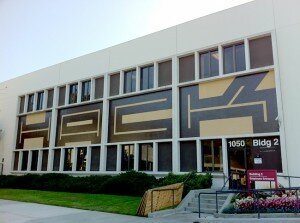 company don’t mean steal, invade, or exploit, but rather to pound away at the keyboard to produce imperfect but brilliant code for experimental and creative new purposes. To “Hack” in this sense is similar to the kinds of creative projects people are creating with Arduino chips, Microsoft Kinect modules, and Makerbot CNC’s. It touches on the type of old-school tradition of tinkering and experimentation that drove Steve Jobs and Steve Wozniak to the Homebrew Computer club, and eventually, to the Apple I. Facebook, too, is seeing the boon in this type of culture, as did Apple and Google years before them.
company don’t mean steal, invade, or exploit, but rather to pound away at the keyboard to produce imperfect but brilliant code for experimental and creative new purposes. To “Hack” in this sense is similar to the kinds of creative projects people are creating with Arduino chips, Microsoft Kinect modules, and Makerbot CNC’s. It touches on the type of old-school tradition of tinkering and experimentation that drove Steve Jobs and Steve Wozniak to the Homebrew Computer club, and eventually, to the Apple I. Facebook, too, is seeing the boon in this type of culture, as did Apple and Google years before them.
“What would you do if you weren’t afraid to fail?” – A banner displayed proudly where employees come and go
In Silicon Valley, failure has become known as the greatest indicator of future success. Just look at Napster renegade turned Venture Capitalist Sean Parker, who failed at legitimizing Napster and was ousted from both Plaxo and Facebook before striking gold with The Venture Fund & Spotify. The point, then, of engaging your employees in this thought exercise, is that they shouldn’t be afraid to fail. Sure, Facebook Beacon was a huge failure – but you don’t hear about anyone losing their job over it. In fact, the failure of Beacon has in many ways influenced Timeline, which is poised to increase Facebook’s dominion over it’s user’s lives and spending habits. The environment is geared to help employees figure out what exactly they would do sans fear of failure – and then do it.
“Fail Harder” – A poster seen throughout Facebook’s offices
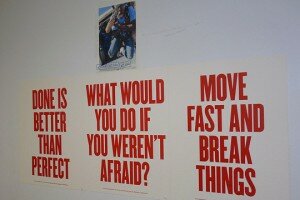 As if the previous poster weren’t enough to drive the point home, Facebook encourages it’s employees, both in and out of the engineering department, to fail in a triumphant blaze of glory. To fail privately in your own corner is not enough; no, to fail properly, you have to create some havoc. Facebook encourages their employees to fail hard because they know that if an employee devotes his greatest efforts to a project, it just might succeed. On the other hand, if he doesn’t, they know that the project or initiative is untenable. Half-assed failures may sustain the question “perhaps it would have worked if….” – but a full-on meltdown leaves no question. Only through this rigorous process of explosive failure can an innovative company like Facebook continue to innovate in the way that they have.
As if the previous poster weren’t enough to drive the point home, Facebook encourages it’s employees, both in and out of the engineering department, to fail in a triumphant blaze of glory. To fail privately in your own corner is not enough; no, to fail properly, you have to create some havoc. Facebook encourages their employees to fail hard because they know that if an employee devotes his greatest efforts to a project, it just might succeed. On the other hand, if he doesn’t, they know that the project or initiative is untenable. Half-assed failures may sustain the question “perhaps it would have worked if….” – but a full-on meltdown leaves no question. Only through this rigorous process of explosive failure can an innovative company like Facebook continue to innovate in the way that they have.
“Move Fast and Break Things” – Another omnipresent poster at Facebook HQ
The final corollary to Facebook’s stance on failure, this quote encourages employees to act with impunity in their “hacker” endeavors. It urges them to try things with little regard, to experiment freely, and to break the very systems they are charged with maintaining. Needless to say, this is more effective at a software company with server farms full of backups than it would be at, say, the electric company, but the point remains that Facebook’s innovative culture is no coincidence. Creating an environment where employees are free to “hack” has been a calculated and continued effort since day one.
“Done is better than perfect” – The inspiration behind the “hackathon”
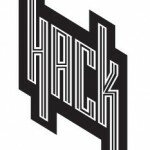
This quote dates back to the early days of Facebook, before there was even a headquarters to speak of. Zuckerberg, notorious for his exuberance and sense of urgency, would initiate a “lock down” any time Facebook launched on a new campus. Nobody would leave the room until the launch was a success. Since then, these nearly24 hour manic episodes are referred to as “Hackathons,” a tradition that actual dates back to 1999 & OpenBSD. During Facebook’s Hackathons, however, employees are treated to a keg and a DJ in return for staying overnight after the workday ends. Each group picks a project – be it a new feature or an initiative to build a roof garden, and has it complete by start of business the next day. You may think 24 hours is not enough to create quality products or features, but you would be mistaken; Facebook Chat, Internationalization, Ajax Search, Friend Finder, and the entire “Photos” functionality (and many, many more features) were all created and launched at Hackathons.
Put product quality before monetization
There’s little to be said here that wasn’t covered in David Fincher’s epic mockumentary, “The Social Network.” Though this is typically only a luxury for generously VC-backed companies like Facebook, it’s important to remember that product quality should always be the guiding light. Had Facebook not chosen to put user experience before advertiser revenue, they’d be MySpace. (And if you had invented Facebook… you would have invented Facebook. Thanks, Jesse).
Truly embrace your roots, no matter how silly they are
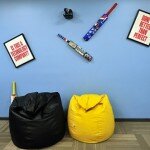 Facebook started in a dorm room, and that mark has been inextricably carved into the company’s furniture. Though they can certainly afford much plusher living quarters, the company has kept the “dorm” look and feel, complete with cheapo furniture, sprawling dining halls, phosphorous lighting, and bare concrete floors. Furthermore, they have held on dearly to their unique cultural talismans, such as the Hackathon, the oddly named conference rooms (“Meeting in ‘Ima Let You Finish,’ anyone?), and their video game competitions. In this regard, they are on par with such greats as Zappos.com – and there is certainly a reason they are pilfering Google employees en masse.
Facebook started in a dorm room, and that mark has been inextricably carved into the company’s furniture. Though they can certainly afford much plusher living quarters, the company has kept the “dorm” look and feel, complete with cheapo furniture, sprawling dining halls, phosphorous lighting, and bare concrete floors. Furthermore, they have held on dearly to their unique cultural talismans, such as the Hackathon, the oddly named conference rooms (“Meeting in ‘Ima Let You Finish,’ anyone?), and their video game competitions. In this regard, they are on par with such greats as Zappos.com – and there is certainly a reason they are pilfering Google employees en masse.
As always, thank you for reading, sharing, commenting, and tweeting!
JL
